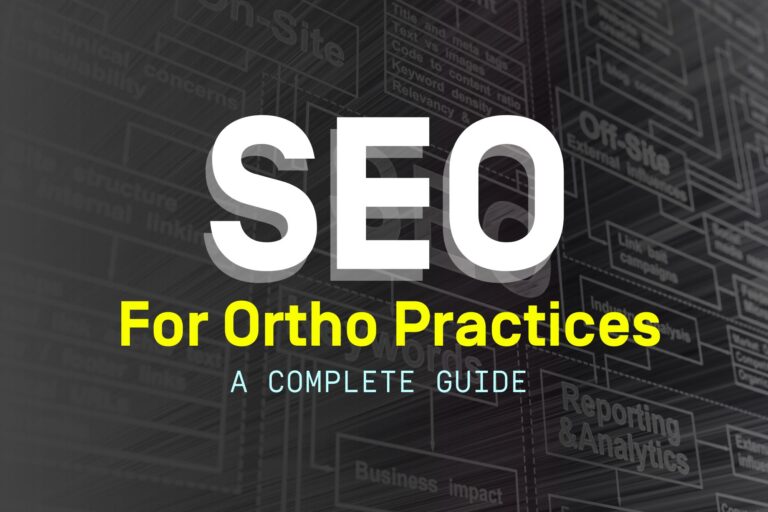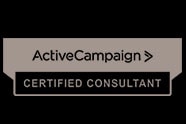The dental industry is continuously evolving. Between rapid technological advancements and shifting consumer preferences, dental professionals like you must stay ahead of the curve to remain competitive and provide top-notch patient care.
If you feel like you’re at risk of falling behind the times, don’t worry — in this article, we’ll explore the top 22 dental industry growth trends. These trends, from digital transformation and artificial intelligence to patient-centric dental care, present an enormous opportunity for forward-thinking dentists like you.
Get ready to discover the future of dental care and see how these trends will shape the industry for years.
Part I: The Digital Transformation In Dentistry
Advancements in technology have been transforming the dental industry for decades, helping to accelerate growth and cut costs. However, over the past five years, digital dentistry has grown by leaps and bounds as dentists increasingly embrace modern tools and techniques to enhance patient care and streamline operations.
New dental innovations and digital tools enhance treatment quality and improve the clinical experience for patients and dentists alike. The average dental school graduate will be increasingly fluent in digital technology. So, established dentists need to educate themselves on these dental growth trends or risk being left behind.
1. Intraoral Scanners & Digital Imaging
Intraoral scanners and digital imaging improve diagnostic accuracy and improve patient experience. Digital impressions of a patient’s teeth and gums help you create highly accurate 3D models of the dentition in seconds. With these detailed models, you can perform orthodontic treatments and dental restorations with increased precision and ease.
Digital models eliminate the need to put your patients through the uncomfortable experience of traditional impressions, transforming the patient experience while improving your clinical outcomes!
2. Electronic Health Records
Electronic health records (EHRs) have quickly become the standard in dental practice management and patient care. Digital records allow real-time, patient-centered health data to be securely accessed and shared among authorized providers across multiple facilities and agencies.
In addition to making data accessible, EHRs can help expedite:
- Appointment booking
- Rescheduling
- Reminders
- Insurance forms and paperwork
Reducing the time spent on administrative tasks allows your team to focus on providing quality patient care. EHRs boost efficiency and improve patient satisfaction by streamlining processes and centralizing patient data. Both of these help your dental practice grow!
Part II: Artificial Intelligence (AI) & Machine Learning In Dental Care
Artificial intelligence and machine learning are revolutionizing our culture and economy, and the dental industry is no exception.
AI will touch every corner of the dental office soon, from diagnostics to treatment planning. Even the American Dental Association has written about the potential of Artificial and Augmented Intelligence technologies to drive digital transformation in dentistry. It’s official — dental AI has arrived! So, let’s look at precisely how it’s driving growth across the industry.
3. AI-Powered Diagnostic Tools
Diagnostic tools powered by AI harness powerful algorithms to analyze medical data and assist you in diagnosing diseases or identifying issues. Companies like Adravision have developed AI tools that work with X-rays to detect pathologies, measure bone levels, and colorize dental features to assist in diagnosis.
These tools can often catch things that your trained and dental eye might miss. In other cases, AI-powered diagnostic tools enhance the precision and speed of diagnosis, ultimately leading to improved and more efficient patient care.
4. Machine Learning In Treatment Planning
Advanced machine learning models can analyze dental data and support various aspects of dental care, specifically related to planning effective treatments.
Machine learning can:
- Analyze patient data to provide more precise and individualized treatment plans
- Recognize potential risks and complications
- Optimize treatment results
- Reduce treatment time and costs
- Improve accuracy and precision
Machine learning and AI are potentially transformative for clinical outcomes, profit, and growth. After all, if you can provide better results for patients while using less time and effort, everybody stands to win.
Part III: 3D Printing & Laser Dentistry
3D printing has transformed the realm of dental prosthetics and aligners almost overnight. This innovative technology allows you to fabricate a wide range of tools and fixtures (source), such as:
- Custom dentures
- Crowns and bridges
- Surgical Guides
- Anatomical replicas & models
- Orthodontic aligners
With a high-quality dental 3D printer, you can create many of these tools in a matter of minutes in your own office. Fitting a crown the same day, rather than waiting weeks for one to come from a lab, saves you an extra appointment and gets your patient immediate results. It’s the kind of efficiency that drives dental practice growth.
5. Customized Prosthetics & Implants
In-office 3D printing and laser additive manufacturing lets you create customized prosthetics and implants on the spot to ensure a better fit, improved functionality, and enhanced patient comfort.
Many procedures can be completed on the same day rather than waiting for days or weeks and requiring multiple appointments. These fixtures are often much faster to create and deliver a more natural and aesthetically pleasing outcome for your patients.
6. Clear Aligners And Orthodontics
Clear aligners have already flipped the orthodontics industry on its head. And with 3D printing technology in the mix, you can offer increasingly efficient and personalized treatment options.
Clear aligners like Invisalign use 3D printing technology to fabricate custom aligners tailored to each patient’s requirements. But now dental and orthodontic offices are fighting back with in-house printers, allowing clear aligners to be created inexpensively and on the spot.
Patients prefer clear aligners to traditional braces, and in-house aligner printing enables precise and effective teeth alignment that starts the same day.
7. Pain-Free Procedures With Laser Technology
New treatments featuring laser technology offer less invasive and more comfortable options, including minimally invasive oral surgery. Laser procedures can be used for dental treatments, such as tooth decay removal, gum reshaping, and teeth whitening.
The benefits of laser dentistry include:
- Reduced pain
- Decreased bleeding
- Accelerated healing times
- Improved patient comfort
Incorporating laser technology into your dental practice enables you to attract customers looking for a pain-free dental experience. These advanced procedures often require less time than traditional, more invasive ones, boosting your efficiency.
Part IV: Teledentistry
Access to dental care is expanding rapidly thanks to the growth of teledentistry. Virtual consultations and remote monitoring make dental care more convenient and accessible for patients, particularly beneficial for those with limited access to in-office dental services, such as people living in rural areas or with mobility issues.
But people without complicating factors are taking advantage of teledentistry’s convenience to save office trips, too. And, every patient you see virtually frees up time in your physical office for another appointment, making teledentistry a trend that every growth-minded dentist must maximize.
8. Virtual Consultations
Virtual consultations give patients access to your clinical expertise without visiting the office. They can receive medical services via video conferencing without visiting dental clinics. These online consultations boost access to care for people who have health or health issues. And they’re increasingly popular with busy professionals who struggle to find time to come into the office.
Virtual consults are convenient for patients while also allowing for a personalized meeting where you can share vital information. Virtual consultations have become increasingly commonplace since the Covid-19 pandemic, with patients realizing they can get a similar level of care without being physically in your chair.
9. Remote Monitoring & Treatment Adjustments
Remote monitoring and treatment adjustments allow you to ensure strong treatment outcomes without tying up your office unnecessarily. They can be used effectively to oversee orthodontic treatments, observe intraoral situations, and even make treatment adjustments remotely. Many patients fail to follow up on dental treatments without remote monitoring. By offering them a quick and easy way to check in that doesn’t require a trip to the office, you can help them get the best results for their oral health.
Part V: Growth Trends In Dental Marketing & Advertising
10. TikTok & YouTube Shorts
The growth of short-length video marketing has been the most critical trend in social media over the past few years. Once just a home for dance trends and viral challenges, TikTok has become a leading player in the social media world, with over 1 billion active users worldwide.
For inspiration on using short videos to grab free attention for your dental practice online, check out some of the best dental TikTok accounts. Strong video content can be cross-posted to YouTube Shorts, another short-form video service that’s tried to capitalize on the momentum created by TikTok.
11. Facebook & Instagram
It may sound a bit dramatic to call Facebook and Instagram a “trend.” After all, these two Meta-owned platforms have dominated the social media landscape for years. However, the truth is that most dentists still need to optimize the growth potential of these social networks.
Running ads on Meta with an air-tight dental patient follow-up system is still one of the easiest and most predictable ways to scale your dental or orthodontic practice in 2023. And it’s still the #1 place to reach an older demographic online — including the parents who drive most of the revenue for many practices.
12. Influencer Marketing For Dentists
In addition to running your social media campaigns, utilizing influencers is a great way to spread your influence online. The influencer culture continues on an uptrend with no end in sight.
An influencer for your dental practice doesn’t have to be a Kardashian. You can find micro-influencers in your local community, and those folks may have even more value for your practice. Often, you don’t even need to make a financial investment. You can trade free services, like clear aligners or teeth whitening, for some promotional posts that will help raise your profile and attract new patients.
Part VI: Group Practices & Dental Service Organizations (DSOs)
You’ve probably noticed a trend toward group practices and dental service organizations (DSOs) over the past few years. Shared resources, streamlined operations, and increased market presence make them an attractive option for dental practice owners like yourself.
As solo dental practices face increasing challenges in staying afloat, the rise of group practices and DSOs is transforming the dental industry landscape.
13. Benefits Of Group Practices
Group practices can help you get cost savings and improve patient care by using economies of scale to negotiate more favorable rates with suppliers. Group practices can enhance patient care and attract a more extensive patient base through a broader selection of services, more efficient appointment scheduling, and improved communication between care providers.
As the dental industry continues to evolve, group dentistry practices are an increasingly popular choice to investigate if you want to grow.
14. The Role Of DSOs
DSOs support dental practices by providing management, marketing, and administrative services, allowing your office to focus on patient care rather than day-to-day practice operations. DSOs can help you get better patient results by giving you resources and technology you wouldn’t have as a solo dentist.
As the dental industry continues to evolve, the role of DSOs in supporting dental practices is on a positive growth trend, and we don’t expect it to turn back anytime soon.
Part VII: Patient-Centric Approaches In Dental Care
Patient-centric approaches in dental care prioritize personalized treatment plans, enhanced communication, and education to improve dental patients’ satisfaction and outcomes.
This can range from simply giving them more individualized attention to focusing your efforts around the values of a specific audience to make them feel more identified and aligned with your practice.
15. Sustainable Dental Products
Sustainable dental products cater to environmentally conscious consumers by offering eco-friendly alternatives to traditional dental products. Environmentally conscious patients increasingly make their decisions based on green-friendly dental practices.
A few examples of sustainable dental products include:
- Bamboo toothbrushes
- Plastic-free toothpaste
- Biodegradable dental floss
- Eco-friendly mouthwash
When you incorporate these products into your practice, you’ll demonstrate your commitment to sustainability, attracting eco-conscious patients who will likely recommend your practice to their friends and online communities, too!
16. Energy Efficiency & Waste Reduction
Like green products, you can implement strategies to minimize your environmental impact. By boosting energy efficiency and reducing waste, you contribute to a greener industry. Energy-efficient dental equipment, optimized lighting systems, and renewable energy sources can reduce your carbon footprint and operating costs.
Embracing sustainability, you’ll not only benefit the environment, but you’ll also attract and retain a growing number of eco-conscious patients.
17. Personalized Treatment Plans
Personalized treatment plans consider each patient’s needs and preferences to ensure their care is tailored to their unique requirements. Considering factors such as medical history, lifestyle, and personal preferences, dental professionals can design more effective and appropriate treatment plans.
This personalized approach improves patient outcomes and fosters trust and satisfaction in the dentist-patient relationship. As the quality of clinical dentistry has risen across the industry, building strong relationships is more important than ever in growing your business.
18. Enhanced Communication & Education
Effective communication and patient education have always been essential to patient-centric dental care. But the expectations of your patients are continually rising. An increasingly more educated patient base now insists on a level of personal attention that was not commonplace across the dental industry just a few years ago.
Ensuring your team is trained in patient-centered communication skills and active listening enhances patients’ understanding of their treatment plans and makes them feel more comfortable discussing their concerns.
19. Dental Spa Services
Many busy patients now look to use their time in the dentist’s chair as a moment of tranquility and escape. While patients once feared the pain and discomfort of the dentist’s office, a growing number of practices now offer dental spa services that combine dental care with relaxation and comfort.
Dental spas offer a variety of relaxation and wellness treatments, such as:
- Massages
- Aromatherapy
- Paraffin wax hand treatments
- Neck pillows
- Complimentary beverages
Even if you’re not looking to convert your office into a spa, some amenities like comfortable chairs, healthy plants, and complimentary beverages in the waiting room can go a long way to improving patient satisfaction and retention.
20. Sleep Or Sedation Dentistry
Dentists have used various sedation techniques when necessary for decades — from nitrous oxide to general anesthesia. However, dental practices specializing in sedation dentistry to help overcome dentophobia and general anxiety are increasingly popular. Sedation is also helpful, and even necessary, to provide quality care to children who can’t relax sufficiently for treatment.
By advertising this service, many practices have attracted new patients and encouraged regular patients to visit more frequently. However, the use of sedation techniques is closely regulated by state dental boards, and rules for the elective use of sedation may vary. It is an emerging trend and a real opportunity for growth for many practices.
21. Holistic & Natural Dentistry
Holistic and natural dentistry focuses on your patients’ overall health and well-being, incorporating natural treatments and therapies to promote oral health. This alternative approach to dental care emphasizes the use of natural oral care products, such as:
- Herbal toothpaste
- Herbal mouthwash
- Bamboo toothbrushes
- Oral supplements
Offering holistic and natural dental services allows dental practices to attract patients who prioritize their overall well-being and seek more natural alternatives to traditional dental care, including the expertise of holistic dental hygienists.
22. Geriatric Dental Care
With an aging population, specialized geriatric dental care, or senior dental care, is becoming increasingly important to cater to the unique dental needs of elderly patients. This form of dental care focuses on providing comprehensive oral health care to elderly patients, including preventive, restorative, and emergency care.
Offering specialized geriatric dental care allows dental practices to better cater to the growing aging population and ensure that their dental needs are met.
Recapping The Top Dental Growth Trends
To recap, the dental industry is experiencing rapid growth and evolution, driven primarily by two factors: technological advancements and changing consumer preferences.
Growing your dental practice in 2023 takes a different skill set than in 2003. You must educate yourself on the exciting digital transformations that are making treatment more efficient, effective, and comfortable. And you’ll need to learn to adapt to new tools and techniques of clinical treatment.
But you’ll also need to get in touch with your patient’s preferences and personal needs. Patients are increasingly drawn to dental professionals who reflect their desires and worldview — whether that’s increased comfort, eco-friendly practices, or treatment plans that recognize each of them as an individual with unique needs and preferences.
Don’t resist the change! By staying open-minded, curious, and adaptable, you’ll learn to follow the trends to move your practice forward profitably!










